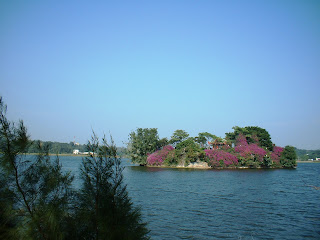Kinmen, an offshore island belonging to Taiwan, is also known as Jinmen and Quemoy. It's very close to the Chinese mainland; actually, you can see the mainland clearly from Kinmen, but you can't go there, because of the political situation. During the 1950s, the Chinese shelled Kinmen with massive amounts of artillery, and also tried to invade twice. They didn't succeed, obviously, but they did force the Taiwanese to build elaborate tunneling systems. On Kinmen they have an underground theater, an underground hospital, underground docks (the Zhushan caves, which took five years to hew out of solid granite), and many, many tunnels for soldiers and civilians to lurk in. Now that the situation is peaceful, you can visit all these places as a tourist. The 823 Museum commemorates the soldiers and civilians who suffered through all the shelling.
Kinmen also has many birds, lakes and parks to admire. Since it's an island, it also has beaches and lots of coastline, but as we were visiting in winter it was too cold to go swimming. We wouldn't have been allowed to swim anyway, as the Taiwanese believe any body of water is dangerous. In fact, I have seen many little pools three feet deep (or less!) surrounded by fencing and multiple lifesavers. Most people don't know how to swim, odd for an island nation.
Kinmen has been inhabited by Chinese continuously since the Tang dynasty, so they also have many old buildings with traditional curved roofs (since ghosts don't like curves) and old temples. I especially liked the statues of wind lions, which are statues of lion gods said to protect against strong wind, termites and misfortune. Kinmen is very windy, so the island has maybe 100 person-sized statues scattered about (many of which are dressed in capes and bows). The one in the photo was about seven feet tall.







No comments:
Post a Comment